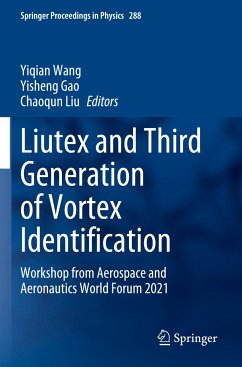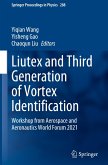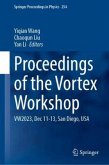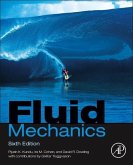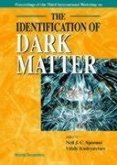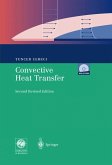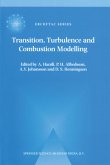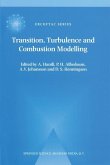Liutex and Third Generation of Vortex Identification
Workshop from Aerospace and Aeronautics World Forum 2021
Herausgegeben:Wang, Yiqian; Gao, Yisheng; Liu, Chaoqun
Liutex and Third Generation of Vortex Identification
Workshop from Aerospace and Aeronautics World Forum 2021
Herausgegeben:Wang, Yiqian; Gao, Yisheng; Liu, Chaoqun
- Broschiertes Buch
- Merkliste
- Auf die Merkliste
- Bewerten Bewerten
- Teilen
- Produkt teilen
- Produkterinnerung
- Produkterinnerung
This proceedings highlights the applications of the newly introduced physical quantity Liutex in hydrodynamics and aerodynamics. Liutex is used to represent the fascinating rotational motion of fluids, i.e., the vortex. Ubiquitously seen in nature and engineering applications, the definition of vortices has been elusive. The Liutex vector provides a unique and systematic description of vortices. The proceedings collects papers presented in the invited workshop "Liutex and Third Generation of Vortex Identification for Engineering Applications" from Aerospace and Aeronautics World Forum 2021.…mehr
Andere Kunden interessierten sich auch für
![Liutex and Third Generation of Vortex Identification Liutex and Third Generation of Vortex Identification]() Liutex and Third Generation of Vortex Identification164,99 €
Liutex and Third Generation of Vortex Identification164,99 €![Proceedings of the Vortex Workshop Proceedings of the Vortex Workshop]() Proceedings of the Vortex Workshop153,99 €
Proceedings of the Vortex Workshop153,99 €![Fluid Mechanics Fluid Mechanics]() Pijush K. KunduFluid Mechanics74,99 €
Pijush K. KunduFluid Mechanics74,99 €![Identification of Dark Matter, the - Proceedings of the Third International Workshop Identification of Dark Matter, the - Proceedings of the Third International Workshop]() Identification of Dark Matter, the - Proceedings of the Third International Workshop246,99 €
Identification of Dark Matter, the - Proceedings of the Third International Workshop246,99 €![Convective Heat Transfer Convective Heat Transfer]() Tuncer CebeciConvective Heat Transfer75,99 €
Tuncer CebeciConvective Heat Transfer75,99 €![Transition, Turbulence and Combustion Modelling Transition, Turbulence and Combustion Modelling]() HanifiTransition, Turbulence and Combustion Modelling154,99 €
HanifiTransition, Turbulence and Combustion Modelling154,99 €![Transition, Turbulence and Combustion Modelling Transition, Turbulence and Combustion Modelling]() Transition, Turbulence and Combustion Modelling149,99 €
Transition, Turbulence and Combustion Modelling149,99 €-
-
-
This proceedings highlights the applications of the newly introduced physical quantity Liutex in hydrodynamics and aerodynamics. Liutex is used to represent the fascinating rotational motion of fluids, i.e., the vortex. Ubiquitously seen in nature and engineering applications, the definition of vortices has been elusive. The Liutex vector provides a unique and systematic description of vortices. The proceedings collects papers presented in the invited workshop "Liutex and Third Generation of Vortex Identification for Engineering Applications" from Aerospace and Aeronautics World Forum 2021. The papers in this book cover both the theoretical aspects of Liutex and many applications in hydrodynamics and aerodynamics. The proceedings is a good reference for researchers in fluid mechanics who are interested in learning about the wide scope of applications of Liutex and using it to develop a new understanding of their research subjects.
Produktdetails
- Produktdetails
- Springer Proceedings in Physics 288
- Verlag: Springer / Springer Nature Singapore / Springer, Berlin
- Artikelnr. des Verlages: 978-981-19-8957-5
- 2023
- Seitenzahl: 436
- Erscheinungstermin: 23. März 2024
- Englisch
- Abmessung: 235mm x 155mm x 22mm
- Gewicht: 736g
- ISBN-13: 9789811989575
- ISBN-10: 9811989575
- Artikelnr.: 70039477
- Herstellerkennzeichnung
- Springer-Verlag GmbH
- Tiergartenstr. 17
- 69121 Heidelberg
- ProductSafety@springernature.com
- Springer Proceedings in Physics 288
- Verlag: Springer / Springer Nature Singapore / Springer, Berlin
- Artikelnr. des Verlages: 978-981-19-8957-5
- 2023
- Seitenzahl: 436
- Erscheinungstermin: 23. März 2024
- Englisch
- Abmessung: 235mm x 155mm x 22mm
- Gewicht: 736g
- ISBN-13: 9789811989575
- ISBN-10: 9811989575
- Artikelnr.: 70039477
- Herstellerkennzeichnung
- Springer-Verlag GmbH
- Tiergartenstr. 17
- 69121 Heidelberg
- ProductSafety@springernature.com
Yiqian Wang Dr. Yiqian Wang is currently an associate professor at Soochow University, Suzhou, China. He obtained his Ph.D. from Nanjing University of Aeronautics and Astronautics, Nanjing, China, in 2016. He did research at the University of Texas at Arlington as an visiting student under the supervision of Prof. Chaoqun Liu during 2014~2015. After graduation, he became a postdoctoral researcher at Tsinghua University for two years until 2019 when he joined Soochow University. He is one of the main contributors to the developments of the third generation of vortex identification methods, especially the Liutex-based system and the Omega methods. As the coeditor, he and Prof. Chaoqun Liu have published a proceeding book titled "Liutex and Third Generation of Vortex Definition and Identification, An Invited Workshop from Chaos 2020" with Springer. His research focuses on vortex identification, turbulence and numerical methods. Yisheng Gao Dr. Yisheng Gao is currently a lecturer at Nanjing University of Aeronautics and Astronautics University, Nanjing, China. He received his Bachelor of Engineering degree in Aircraft Design and Engineering (2007), Master of Engineering degree in Fluid Mechanics (2009) and Ph. D. degree in Fluid Mechanics (2016) from Nanjing University of Aeronautics and Astronautics University, China. He was a postdoctoral fellow at the University of Texas at Arlington, Texas, USA in 2017-2019. He has published more than 20 journal and conference papers and has been one of the main contributors to the developments of the third generation of vortex identification methods. His research is concerned with computational fluid dynamics, including direct numerical simulation and discrete adjoint methods. Chaoqun Liu Dr. Chaoqun Liu received both BS (1968) and MS (1981) from Tsinghua University, Beijing, China and PhD (1989) from University of Colorado at Denver, USA. He is currently the Tenured and Distinguished Professor and the Director of Center for Numerical Simulation and Modeling at University of Texas at Arlington, Arlington, Texas, USA. He has worked on high order direct numerical simulation (DNS) and large eddy simulation (LES) for flow transition and turbulence for 32 years since 1990. As PI, he has been awarded by NASA, US Air Force and US Navy with 50 federal research grants of over 5.7 × 106 US dollars in the United States. He has published 14 professional books, 140 journal papers and 158 conference papers. He is the founder and main contributor of Liutex and the third generation of vortex definition and identification methods including the Omega, Liutex/Rortex, Modified Liutex-Omega, Liutex-Core-Line methods, Objective Liutex, RS vorticity decomposition and UTA R-NR velocity gradient tensor decomposition. He is also the founder of Liutex based new fluid kinematics.
Liutex and Third Generation of Vortex Definition and Identification.- Galilean Variance of streamline in vortex/Liutex visualization.- Rules of tensor and matrix operation for Liutex calculation.- Liutex Core Tube for Vortex Visualization and Structure.- Study of Vortex and Vorticity in a Laminar Flow.- POD Analysis on Losing Symmetry of Vortex Structure in the Flow Transition by Liutex Method.- The Liutex Shear Interaction in Boundary Layer Transition.- Liutex Shear Interaction in Turbulent Channel Flow.- Experimental studies on the evolution of hairpin vortex package in the boundary layer of a square tube.- The Correlation between Pressure Fluctuation and Liutex Spectrum in Boundary Layer Transition.- Statistical Analysis for Liutex Growth in Flow Transition.- Three-Dimensional Vortex Structure Identification of Fluid Coupling and Analysis of Spatial-Temporal Evolution Mechanism.- Numerical Simulation and Analysis of Two-phase Flow Around Cylinder using Pseudo-Potential Model and Liutex Method.- Analysis of Vortices Shed by Generic Submarines based on Liutex.- Vortex Identification Methods Applied to Complex Viscous Flow Field of Ship in Restricted Waters.- The Applicability of Third Vortex Identification Methods on Atmospheric Boundary Layer and Turbine Wakes.- Propeller Wake and Noise Analysis based on the Third-Generation Vortex.- Identification of Vortex around High-Speed Ship based on Liutex Method.- Identification of Vortical Structures of Flows past a Surface-piercing Finite Square Cylinder with Rounded Corners.- Comparison of Vortex Identification Methods Based on the Liutex Decomposition and Application in a Compressor Cascade.- Research on Vortex Structure of All-Oxygen MILD Combustion Reheating Furnace based on Third-Generation Vortex Identification Method.- The Effect of Fluidic Pintle Nozzle on the Ablative Features.- Liutex Investigation of Backflow Leakage in a Shaft-less Rim-Driven Thruster.- Application of Omega Identification Method in the Ventilated Cavities around a Surface-Piercing Hydrofoil.- Study on Fluid-Borne Noise around a Cylinder based on Vortex Sound Theory with Liutex-Shear Decomposition.- Coherent Structures Analysis across Cavity Interface in Cloud Cavitating Flows using Different Vortex Identification Methods.
Liutex and Third Generation of Vortex Definition and Identification.- Galilean Variance of streamline in vortex/Liutex visualization.- Rules of tensor and matrix operation for Liutex calculation.- Liutex Core Tube for Vortex Visualization and Structure.- Study of Vortex and Vorticity in a Laminar Flow.- POD Analysis on Losing Symmetry of Vortex Structure in the Flow Transition by Liutex Method.- The Liutex Shear Interaction in Boundary Layer Transition.- Liutex Shear Interaction in Turbulent Channel Flow.- Experimental studies on the evolution of hairpin vortex package in the boundary layer of a square tube.- The Correlation between Pressure Fluctuation and Liutex Spectrum in Boundary Layer Transition.- Statistical Analysis for Liutex Growth in Flow Transition.- Three-Dimensional Vortex Structure Identification of Fluid Coupling and Analysis of Spatial-Temporal Evolution Mechanism.- Numerical Simulation and Analysis of Two-phase Flow Around Cylinder using Pseudo-Potential Model and Liutex Method.- Analysis of Vortices Shed by Generic Submarines based on Liutex.- Vortex Identification Methods Applied to Complex Viscous Flow Field of Ship in Restricted Waters.- The Applicability of Third Vortex Identification Methods on Atmospheric Boundary Layer and Turbine Wakes.- Propeller Wake and Noise Analysis based on the Third-Generation Vortex.- Identification of Vortex around High-Speed Ship based on Liutex Method.- Identification of Vortical Structures of Flows past a Surface-piercing Finite Square Cylinder with Rounded Corners.- Comparison of Vortex Identification Methods Based on the Liutex Decomposition and Application in a Compressor Cascade.- Research on Vortex Structure of All-Oxygen MILD Combustion Reheating Furnace based on Third-Generation Vortex Identification Method.- The Effect of Fluidic Pintle Nozzle on the Ablative Features.- Liutex Investigation of Backflow Leakage in a Shaft-less Rim-Driven Thruster.- Application of Omega Identification Method in the Ventilated Cavities around a Surface-Piercing Hydrofoil.- Study on Fluid-Borne Noise around a Cylinder based on Vortex Sound Theory with Liutex-Shear Decomposition.- Coherent Structures Analysis across Cavity Interface in Cloud Cavitating Flows using Different Vortex Identification Methods.

